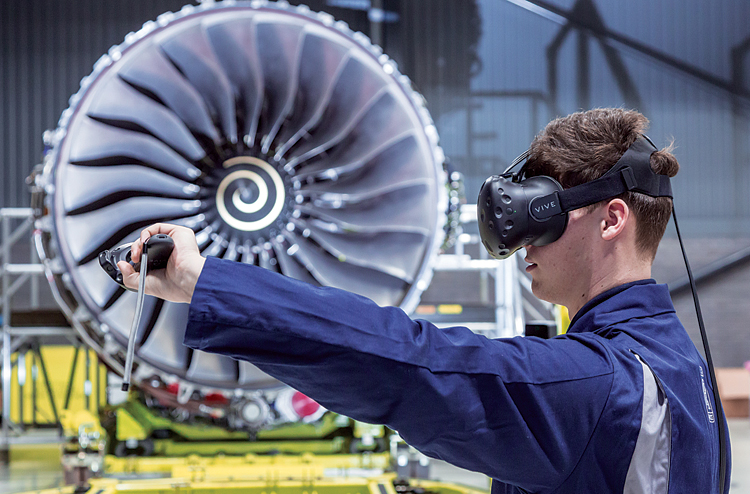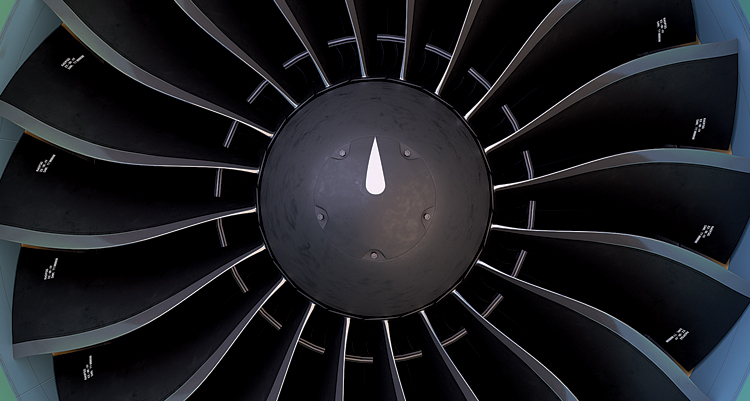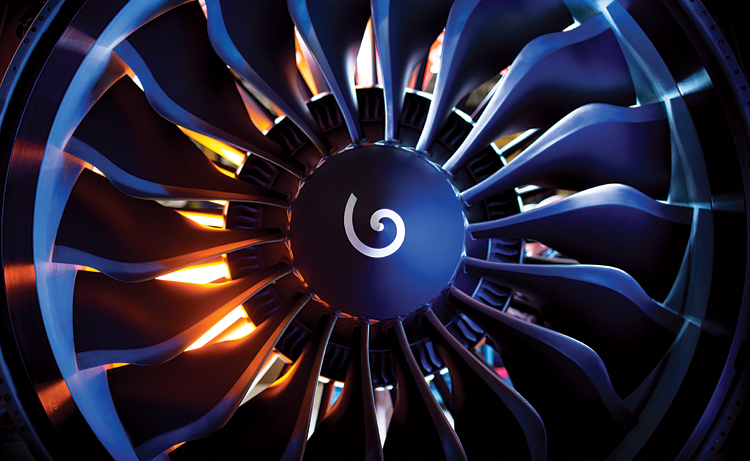INDIAN ARMED FORCES CHIEFS ON
OUR RELENTLESS AND FOCUSED PUBLISHING EFFORTS

SP Guide Publications puts forth a well compiled articulation of issues, pursuits and accomplishments of the Indian Army, over the years

I am confident that SP Guide Publications would continue to inform, inspire and influence.

My compliments to SP Guide Publications for informative and credible reportage on contemporary aerospace issues over the past six decades.
Top Engines for Single Aisle
With environmental concerns taking centre stage, most modern jet airliners are powered by low-specific-thrust/high-bypass-ratio turbofans for better fuel economy and reduced noise

The impressive expansion of the global commercial fleet continues unabated for the ninth year in a row and there is no reason to believe it will slacken anytime soon. According to Boeing’s 2018 edition of its Commercial Market Outlook (the most recent), the demand for new passenger jets between 2017 and 2037 would be 42,730 planes, valued at $6.3 trillion. This huge demand is attributable to steady global economic growth coupled with increased spending by a growing middle class. Airbus is more modest in its assessment, but still estimates that the commercial aviation industry will need 37,390 new passenger and freighter aircraft by 2037. While these forecasts cover the full spectrum of commercial aircraft, Boeing expects that nearly three-quarters of its predicted number, with a market value of $3.48 trillion, will be single-aisle planes.
Single-aisle aircraft, also known as narrow-bodies, have up to six abreast seating in a cabin under four metres wide. Regional jets are treated as a separate category. While the number of seats on single-aisle aircraft generally varies between 120 and 230, the Boeing 757-300 that accommodates up to 295 economy class passengers, is the largest in this category. But it is the twinjet Boeing 737 and the Airbus A320 families that dominate the market. Within the last few years, both aircraft have come out in improved models as the Boeing 737 MAX and the Airbus A320neo respectively. While the smallest Boeing 737 MAX 7 has just 153 seats in two classes, the largest 737 MAX 10 can accommodate up to 220 seats in economy class. The corresponding figures for the Airbus A320neo family range from 124 seats for the A319neo to 244 seats for the A321neo.

The 10,000th Boeing 737 completed production on March 13, 2018 – a “Guinness World Records” certified record – and more than 600 have been built since then. Airbus is not far behind, having delivered 8,674 A320s till March this year. The immense popularity of these two single-aisle jets can be attributed to their versatility and flexibility that permits economical operation on the vast majority of routes. And at the heart of their efficiency are their turbo-fan engines. For every single-aisle plane, at least two engines plus spares and replacements are required. That is why the leading turbofan manufacturers have a bright outlook.
TURBOFAN TRIUMPH
The turbofan is an air-breathing jet engine widely used for aircraft propulsion. Whereas all the air sucked in by a turbojet passes through the turbine, some of that air bypasses the turbine in a turbofan. The ratio of the mass-flow of air bypassing the engine core divided by the mass-flow of air passing through the core is referred to as the by-pass ratio. With environmental concerns taking centre stage, most modern jet airliners are powered by low-specific-thrust/high-bypass-ratio turbofans for better fuel economy and reduced noise.
2018 was a year of transition for CFMI when deliveries of LEAP engines overtook those of the CFM56 for the first time
In fact, the best medium-term route towards cleaner skies lies in advanced engine technology. For instance, over 85 per cent of the fuel savings for the Boeing 737 MAX comes from its CFM International Leading Edge Aviation Propulsion-1 (LEAP-1) turbofans. That is why new fuel-efficient turbofan designs such as LEAP and Pratt & Whitney’s PurePower PW1000G are selling like hot cakes and their manufacturers have already accumulated several thousand backlogs of these engines.
The turbofan market for all types of commercial aircraft is highly concentrated among these top four market players: CFMI (which has an estimated 35 per cent market share), Pratt & Whitney (21 per cent), Rolls-Royce (18.5 per cent), and GE (18.3 per cent). But when it comes to single-aisle planes, just four engines rule the roost.
CFMI – THE ALL-TIME CHAMPION
CFMI is a 50:50 joint venture between GE Aviation, a division of General Electric of the United States and Safran Aircraft Engines (formerly Snecma), a division of Safran of France. The company with headquarters in Cincinnati, Ohio, was founded in 1974 to build and support the best-selling CFM56 series of turbofan engines that power the Boeing 737, Airbus A340, and Airbus A320 families of aircraft. In true collaborative fashion, the name CFM56 was derived from the two parent companies’ commercial engine designations: GE’s CF6 and Snecma’s M56. Strangely enough, the CFM56 did not attract a single order for its first five years and was on the verge of being consigned to the dung heap of history before substantive orders were received. The first CFM56 entered service in 1982, and since then, there has been no looking back. The joint venture has now delivered 30,700 engines to more than 570 operators and has 13,700 engines in backlog.

2018 was a year of transition for CFMI when deliveries of LEAP engines overtook those of the CFM56 for the first time. LEAP is currently the most fuel-efficient turbofan on the market, yet after its 2008 launch many airlines preferred to stick with the tried-and-tested CFM56 for their jets. That is finally changing. As of February this year, CFMI has secured more than 17,275 LEAP orders – installed, spare engines and firm commitments – and is on track to deliver over 2,000 LEAP engines annually by 2020.
However, a note of caution is in order. The LEAP-1B engine’s fortunes are closely tied with the wellbeing of the Boeing 737 MAX since it is the exclusive engine for that single-aisle plane. With the 737 MAX in considerable trouble following two recent catastrophic accidents less than five months apart, Boeing has slashed production. CFMI may be hoping that the problem with the aircraft is resolved and the crisis is over soon without greatly affecting future orders.
PRATT’S POWER
Pratt & Whitney, a subsidiary of United Technologies Corporation (UTC), engines find widespread usage in both commercial and military aviation. Its headquarters are in East Hartford, Connecticut. With more than 13,000 large commercial engines installed, Pratt & Whitney provides power to hundreds of airlines every day. Its main products relevant to single-aisle operators are the PurePower GTF engine and the V2500 engine.
The GTF engine with its revolutionary geared fan technology, entered revenue service in January 2016 and powers the Airbus A320neo family apart from other aircraft. It incorporates the latest advances in aerodynamics, lightweight materials and other major technological improvements in various engine assemblies. But it is defined by its fan drive geared system that enables the fan to spin three times slower than the LP compressor and turbine – each thus turning at its optimum speed. This translates into an amazing 12:1 bypass ratio, a dramatic reduction in stage and part count as well as lower maintenance costs. It is claimed to deliver a 16 per cent reduction in fuel consumption, up to 75 per cent reduction in noise footprint and up to 50 per cent reduction in NOx emissions. The GTF engine has a backlog of more than 8,000 firm and option order for engines from over 80 customers.
COLLABORATION AND COMPETITION
Rolls-Royce, headquartered in London, is the world’s second largest manufacturer of turbofans and produces variants of its Trent engine family for the Airbus A330, A340, A350 and A380, as well as the Boeing 777 and 787 Dreamliner. Till 2011, it was a member of International Aero Engines (IAE), a Zürich-registered joint venture manufacturing company. IAE produces the V2500 engine which is offered as an option for the Airbus A320neo. Since its entry into revenue service in May 1989, more than 5,700 V2500 engines have been delivered to around 200 customers and more than 1,600 engines are on order, making it the second most successful commercial jet engine programme in production today in terms of volume. Rolls-Royce exited IAE in 2011, and no longer produces turbofans for single-aisle planes. The IAE now consists of Pratt & Whitney, Japanese Aero Engine Corporation and MTU Aero Engines.
The future single-aisle turbofan market will be defined by the competition between CFMI and Pratt & Whitney. At present, the CFMI LEAP engine is way ahead of Pratt’s PurePower in terms of sales and backlog. Their relative situation can be gauged by the choice of customers for the Airbus A320neo where about 60 per cent have selected LEAP turbofans and only 40 per cent have opted for the PurePower engines. However, analysts believe that while LEAP has probably reached the limit of technological exploitation of the conventional turbofan, the new design PurePower still has plenty of room for refinement. If it proves itself in commercial conditions over the next few years, the PurePower engine could well outstrip the LEAP in both performance and orders.





